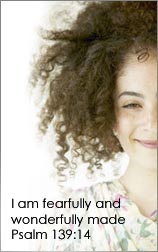
I have been enjoying decoupage for several years now...I am self taught and have done lots of research too. I had several pages on my website (which I am at the moment restructuring) on this wonderful art, some of which I'll try to share here on my blog for those interested in trying out this fun and definitely rewarding hobby. I will start by giving an outline of ...
ITS HISTORY

The word decoupage is derived from the French word decouper which means to cut out. Decoupage is the creative art of cutting, re-assembling, pasting (or glueing) and finally varnishing paper designs for decorating objects. The word itself is a 20th century word but the art of decoupage has a very long and fascinating history, dating back several centuries that can be traced back to many different and distant countries.
In the late 17th century oriental lacquered objects became fashionable in Europe. It was mostly in the form of furniture and came from the Far East. Wealthy people hired painters to paint their furniture and to decorate their walls and ceilings with various designs including country scenes, animals, birds and flowers. However because this was very expensive and much in demand, another form of decoration developed. Drawings were cut out, re-assembled, glued to surfaces or objects and covered with lacquer thus resembling original paintings. This was termed poor man's art from l'arte del povero.
During the 18th and 19th centuries this decorative art became very popular and flourished all over Europe including the houses of the upper classes and royalty. Common people with a flair for the art snipped away at pictures and glued them onto boxes, fire screens and furniture. Many works of distinguished artists ended up in this way.
There are many magnificent pieces of furniture or objets d'art in museums or private homes and are a fine example of fine cutting and colouring, pasting and lacquering.
Over the years decoupage has been practised by many famous people and artists including Marie Antoinette, Madame de Pompadour, Lord Byron and recently Matisse and Picasso.
Today decoupage has definitely made a come-back across the world and is being taught in its many forms. With such an interesting and long history, it is not at all surprising that decoupage is still evolving with different styles and techniques.
Nowadays decoupage has become a fascinating art in its limitless forms. However you should not be discouraged by its complexity. Anyone who knows how to use scissors and glue and has a steady hand can do decoupage! Once you try your hand at this art and use your imagination, the possibilities are endless. And hey presto, you will progress from simple designs to more complex works of art - you are on the way to becoming a decoupeur!
Indeed the art of decoupage offers you an opportunity for endless hours of creativity as well as enjoyment. The finished product will certainly prove to be your trophy of pride and satisfaction for years to come. The image created on any item looks as if it were painted on. A decoupaged gift given to a loved one or a special friend will bring lasting memories. And if preserved in years to come, it might even end up as a valuable antique!
NOTE: If you are totally new to this craft, I suggest you practise first on some glass jars. Then when you feel more confident, bring out that wooden box that you have been meaning to do something with or that odd glass plate you never wanted to throw out and have fun turning them into a work of art! One word of caution though do not experiment on antiques, once the modpodge (or whatever glue you are using) dries it is not easy to scrap it off.
Check these sites out...http://saintjosephslilies.wordpress.com/2008/06/06/focus-on-fashion-jane-austen-decoupage-bangles/http://www.tchochkes.com/wordpress/furniture-fabric-decoupage.html
Read the next posting ...
'Getting Ready To Decoupage'














































